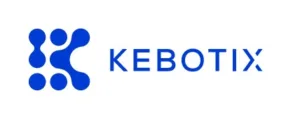On the heels of making breakthrough discoveries destined for next-generation smart glass, lubricants and pesticides that are sustainable, environmentally friendly and economical, Kebotix is primed to disrupt a 35-year-old industry on the strength of its AI-powered suite prediction capabilities.
OLEDs, short for organic light-emitting diodes, are ubiquitous in the electronics market, having found their way into smartphones, computers, televisions, handheld game consoles and other devices with flat-screen displays that demand high image quality and low energy consumption. OLEDs are also gaining traction in lighting as it provides diffused light less harmful to human eyes, according to Kebotix, which also foresees the healthcare sector as showing promise with applications in wearable, sensor-embedded smart patches.
These colored light sources have certainly come a long way since Steven Van Slyke and Ching Wan Tang invented the technology at Eastman Kodak in 1987, and was first commercialized as a display for Pioneer car stereos in 1997, according to the National Inventors Hall of Fame.
OLEDs are not without their disadvantages, however, and for the past couple of decades R&D focused on the technology has been an expanding field in academia and industry. Kebotix, which since its 2017 founding has gained a reputation for creating new, disruptive chemistries and materials at a rapid pace while reducing costs, has been among those tackling ways to improve deficiencies inherent to the technology as low yield, premium cost, blue pixelization and smaller lifespan of organic materials.
Tapping into its proprietary closed-loop innovation platform that accelerates discovery, Kebotix built a pipeline for smart design of OLED emitter molecules. The pipeline, spawned by a Small Business Innovation Research grant from the U.S. Department of Energy, leverages the ability of AI to learn chemical intuition by analyzing huge amounts of data simultaneously and synergistically with the oversight of science experts. In less than six months several new classes of candidate molecules were discovered and developed into device prototypes.
Kebotix is targeting early- to mid-2022 for when these molecules will be ready to test with manufacturing partners interested in being early adopters of next-generation, commercially viable technology that seems to never stop advancing at Kebotix.
“Our pipeline powered by artificial intelligence and machine learning generates dozens of candidate molecules out of a pool of 20 million on a weekly basis,” said Dr. Semion Saikin, Kebotix’s chief science officer. “Routine as discovering molecules is at Kebotix, we’re so excited when we test these molecules in device prototypes. We’re not talking about single discoveries, but a systematic development of materials.”
Saikin explained that the emitters discovered by Kebotix fit more than conventional molecular vapor deposition technology that is widely used in display production.
“Our materials can be deposited using solution-processing technologies,” Saikin said, citing printing as an example. “Kebotix’s findings have potential, if not promising expansion opportunities for OLEDs in smart label packaging, wearable sensors, automotive and other markets in which production costs are crucial factors.”

